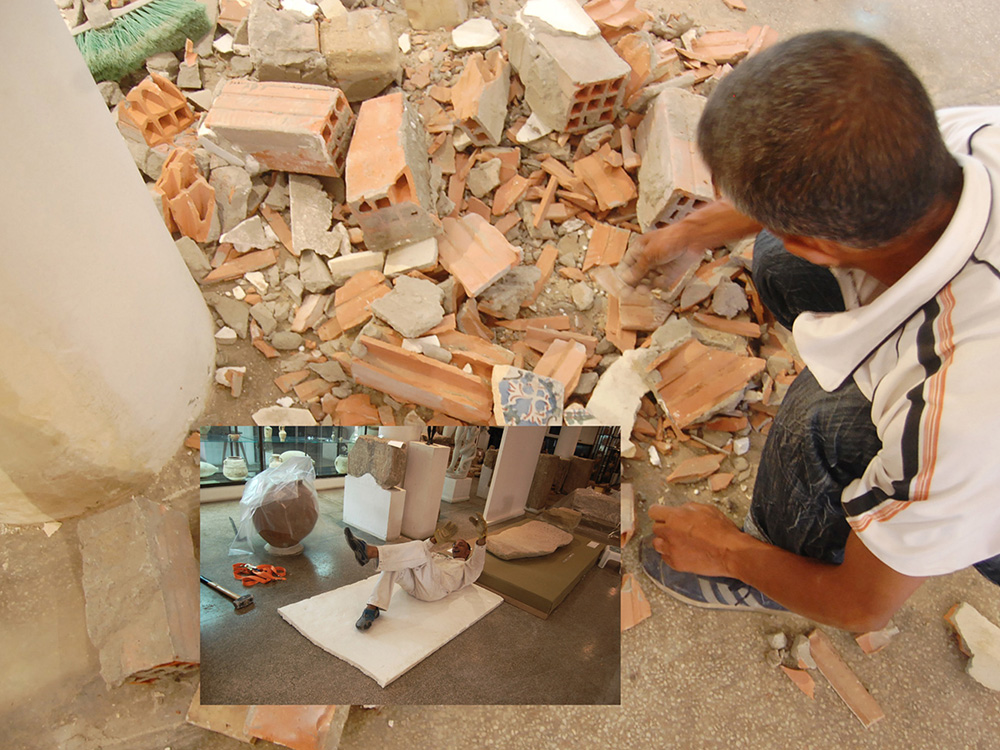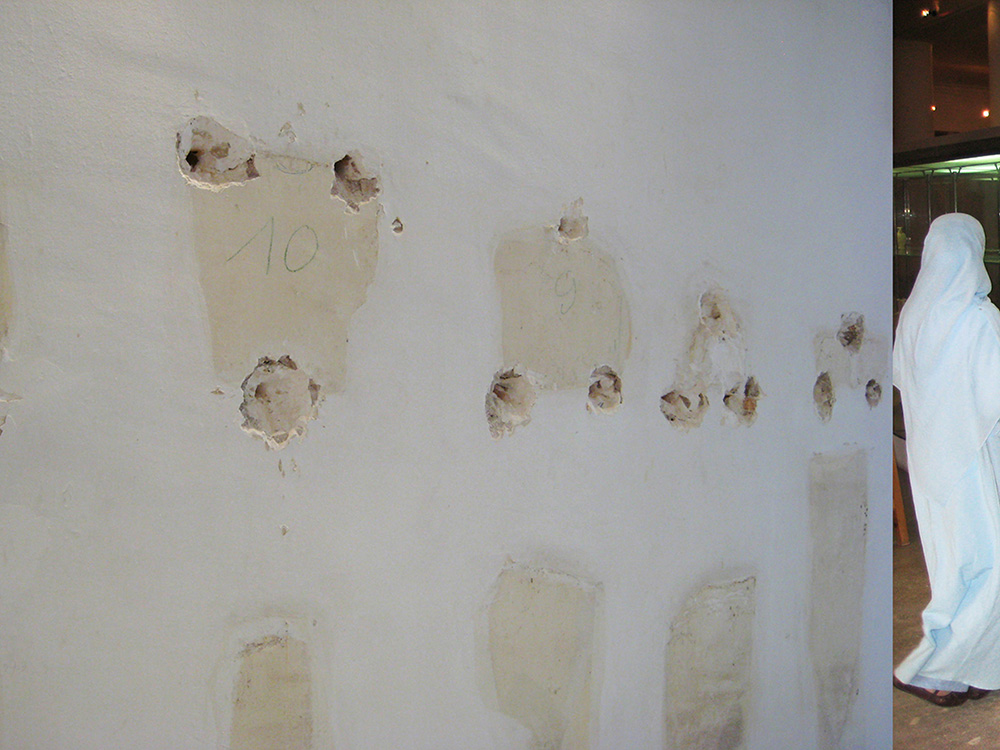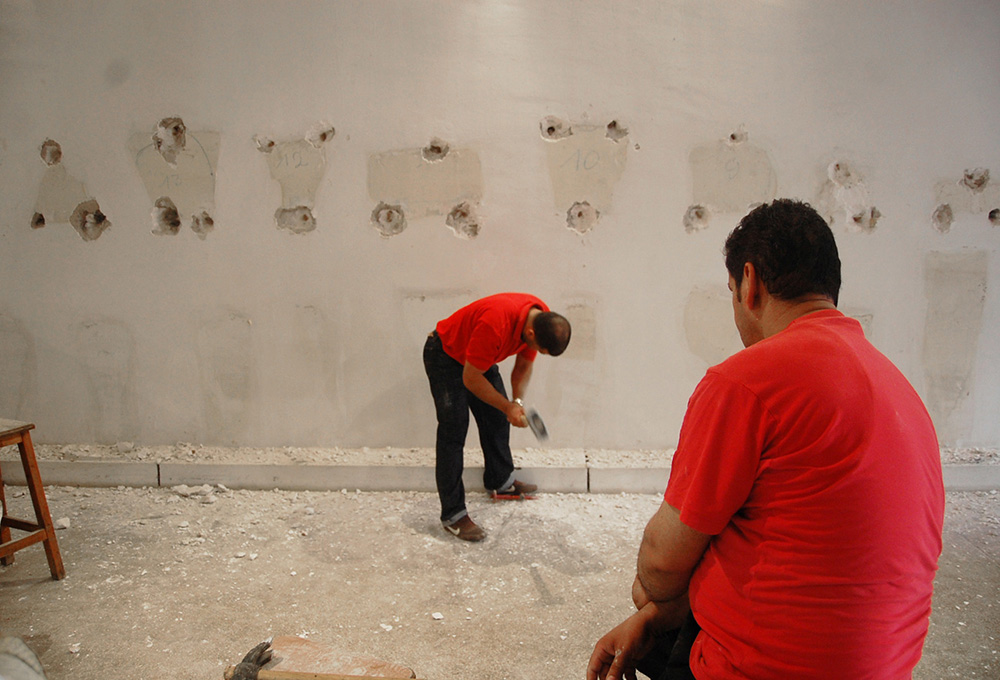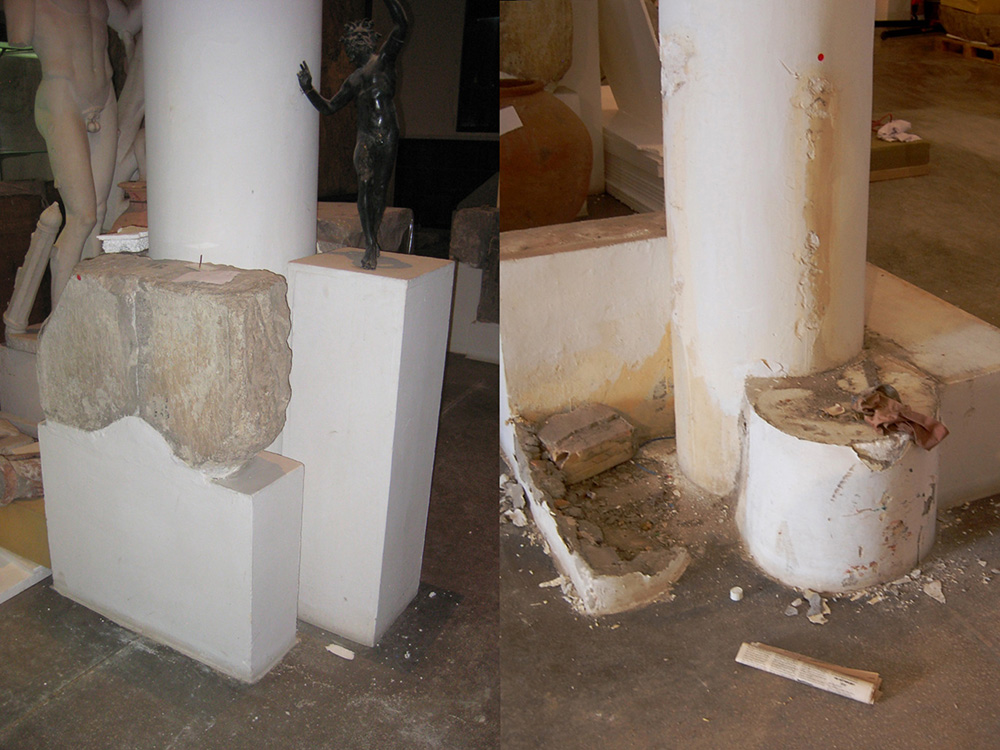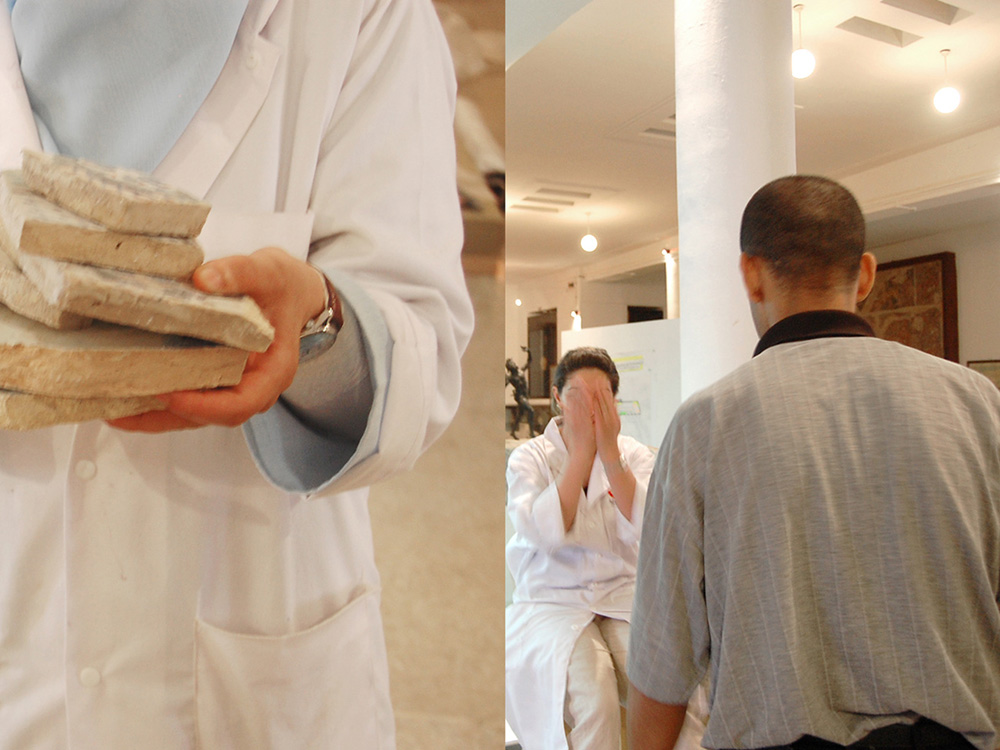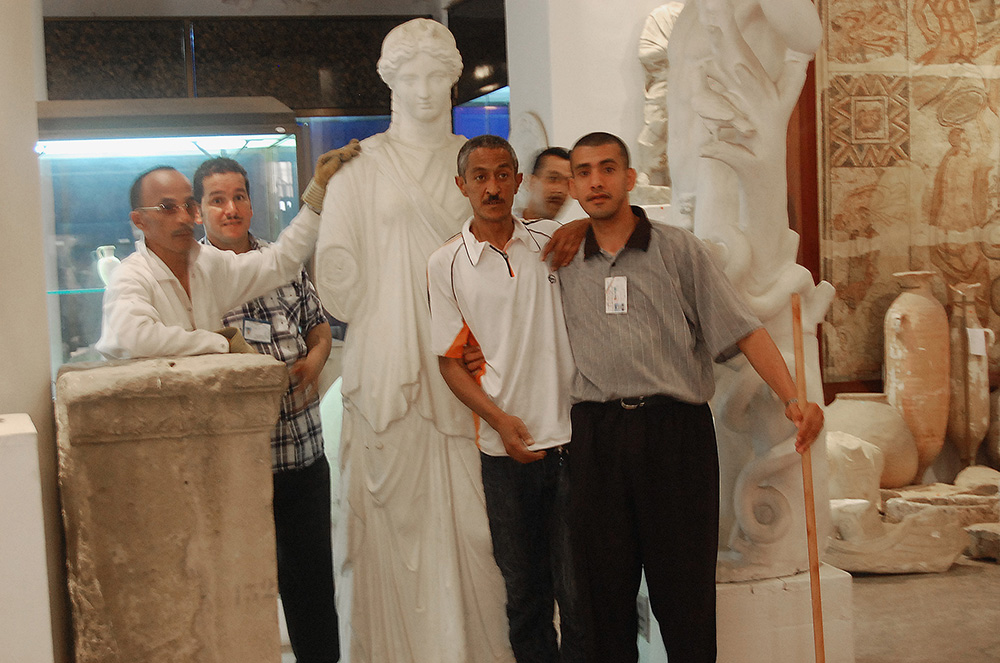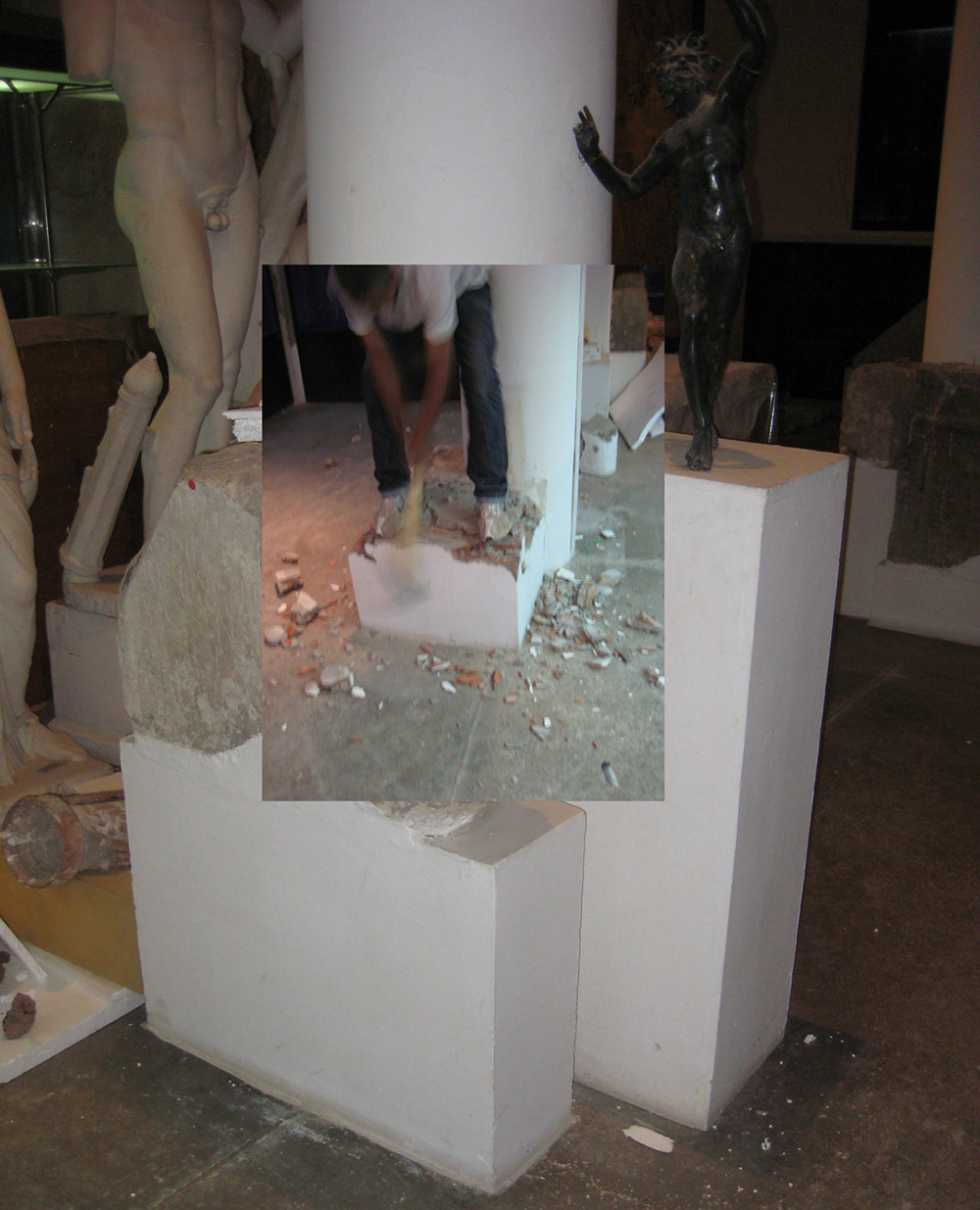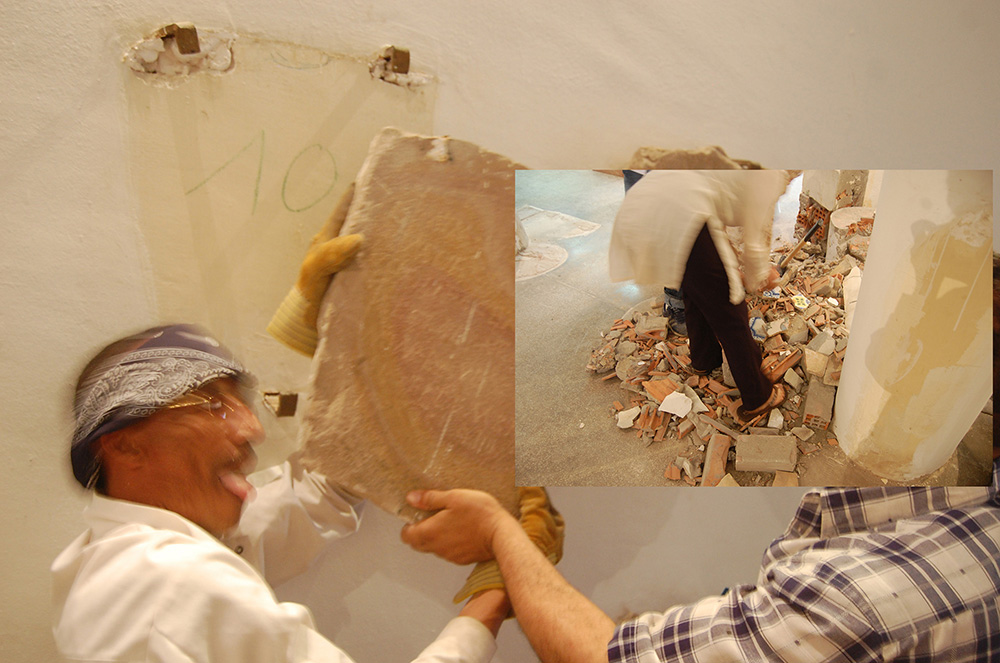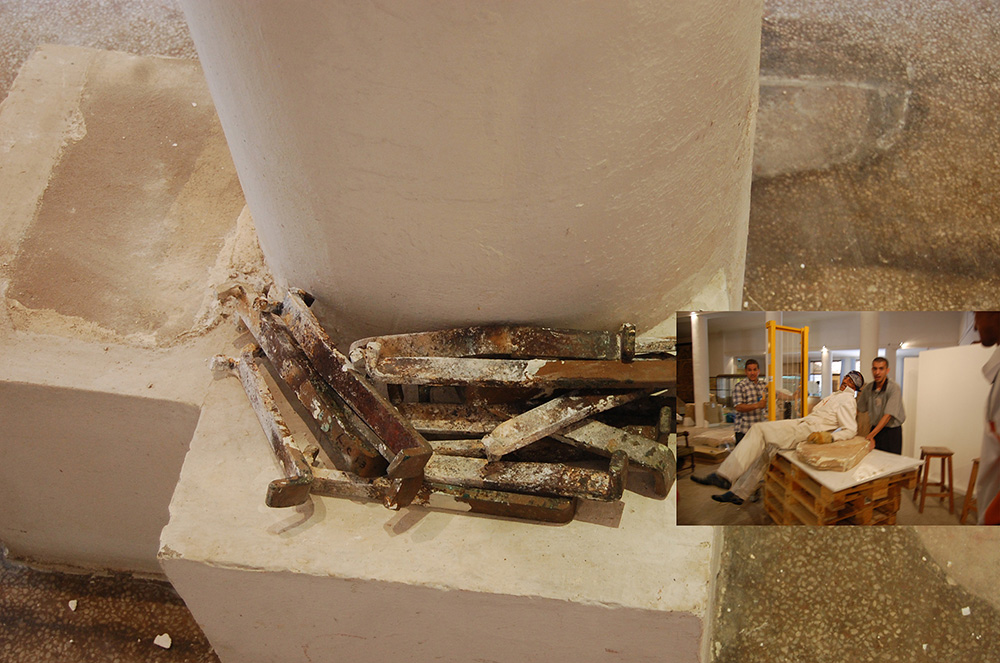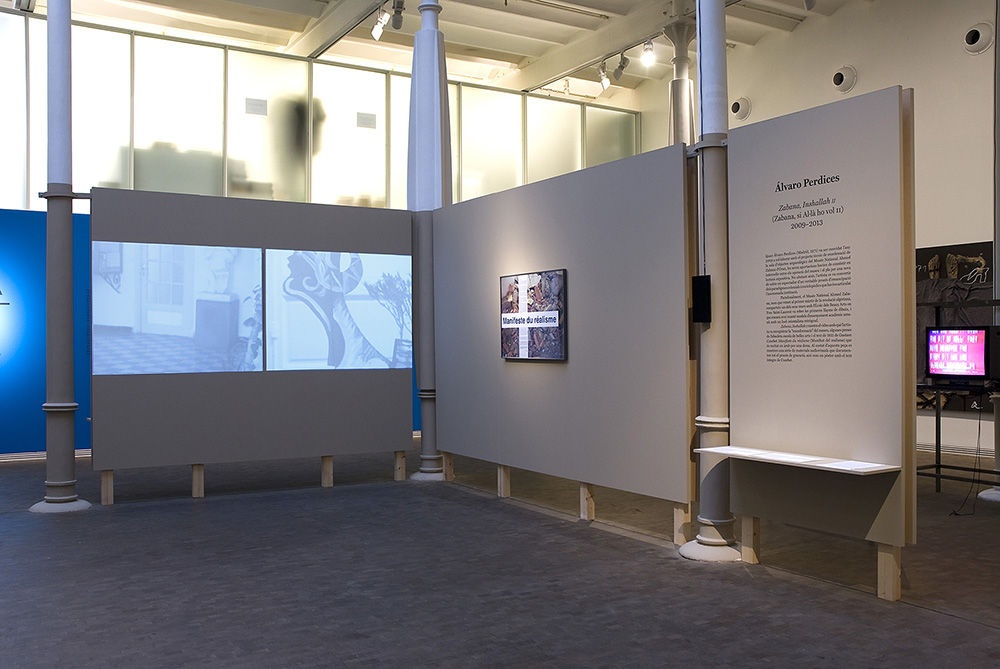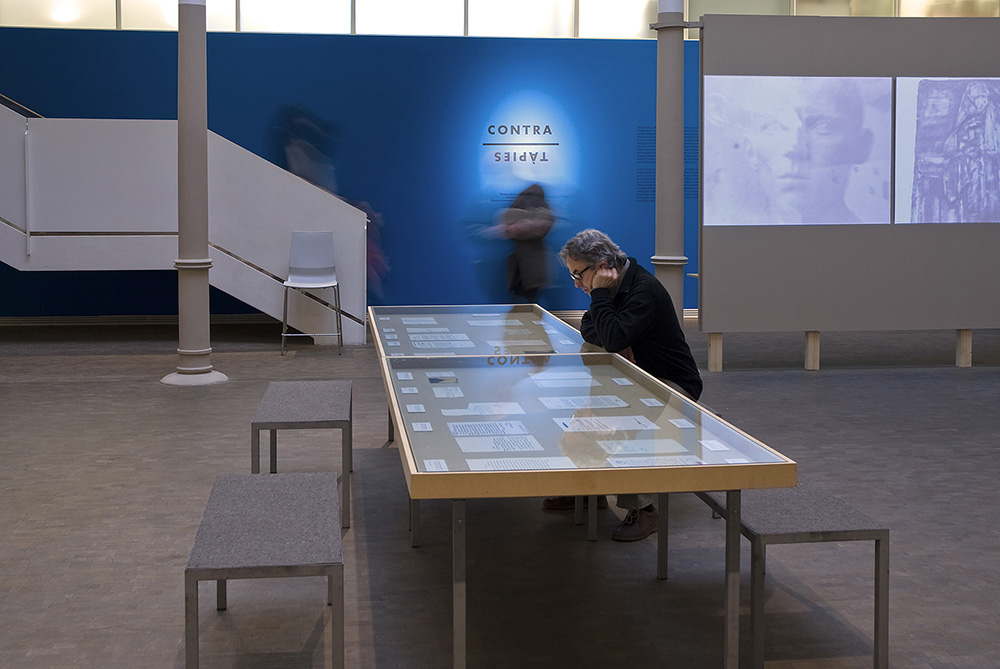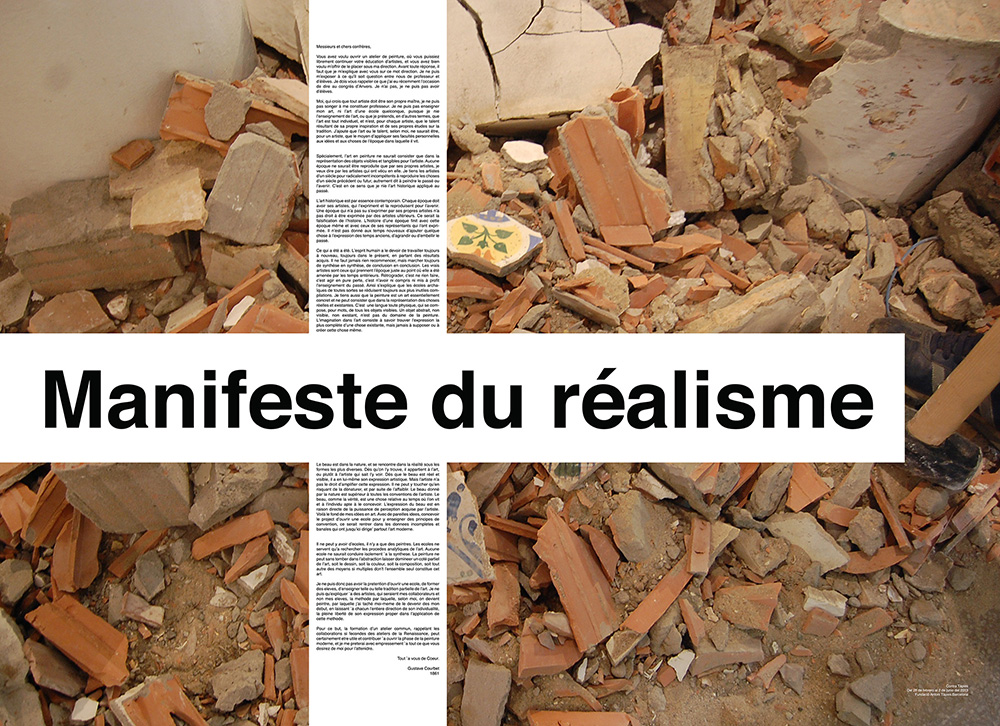Zabana Inshallah
2009
Video 9:28 min
Photo series
The exhibition ZABANA, INSHALLAH (Zabana, if Allah wills) comprises a two-years term project starting in the Summer 2009, when Perdices participated in a technical project for the Ahmed Zabana Museum (Zabana was the first martyr of Algerian independence), in Oran.
The project involved the rearrangement of the museum’s hall of archeological objects. The artist’s task was that of an intermediary between the museum’s staff and the plan for the new reading of the hall’s objects. But, rather than an intermediary, Perdices became a spectator of the dismantling process ‒by means of gestures and movements‒of an institution that was part of both an encyclopedic program and a colonial policy. “On the other hand”, as he himself has pointed out, “I discovered the Musée Ahmed Zabana shared one of its walls with the École des Beaux Arts, where Yves Saint Laurent received his first drawing lessons… By the way, even today the teaching models and the truths are still loyal to the principles of 19th century French Academy, the same ones Courbet decided to smash. The same structures, the same affectation produced by an outdated stale academicism, only now it boasts the features of a non-Western, pronouncedly Orientalist look”. “I’m not sure if the encounter of my work with these recent riots or revolutions occurring in the Arabian scene is actually a coincidence. I’d rather say they both respond to that need to express the instinctive, the individual, instead of the institutionalized. Or perhaps, it has to do with the modern ideal of minorities: a need to dismantle. It’s interesting to see this parallelism between art and life. In fact, there are certain actions that could only be caused by the effect of circumstances: contexts themselves produce or generate their own particular effects. On the other hand, if I were to draw a line from my earliest works (The Black Photos) to the most recent ones (Negada, abierta y desnuda, [Denied, open and naked] in the Espacio de Arte Contemporáneo de Castellón, or Zabana, Inshallah), that line would certainly point to the space of emancipation by means of a personal taste, or the individuality of a certain behavior or a specific voice… It is interesting how these elements can agitate, and even politicize ‒from their mere formality‒ the field of the normative.”
Five photographs (50cm x 70 cm tin framed) showing different images from the “transformation” process of the Ahmed Zabana Museum, as well as a 10 minutes video showing old typewritten signs from the Museum, shots from the neighboring (and obsolete) Fine Arts School and Courbet’s Realism Manifesto, all these images are literally merged with each other to put up the axis of this intense and meditated project.
